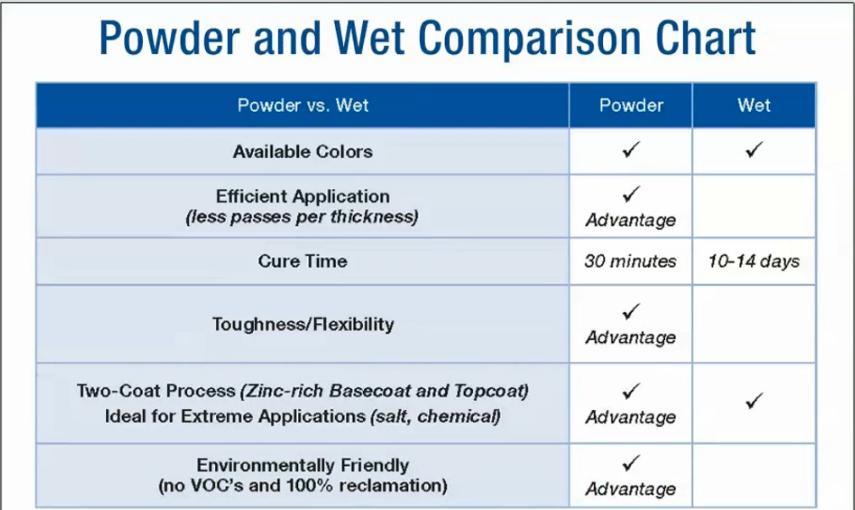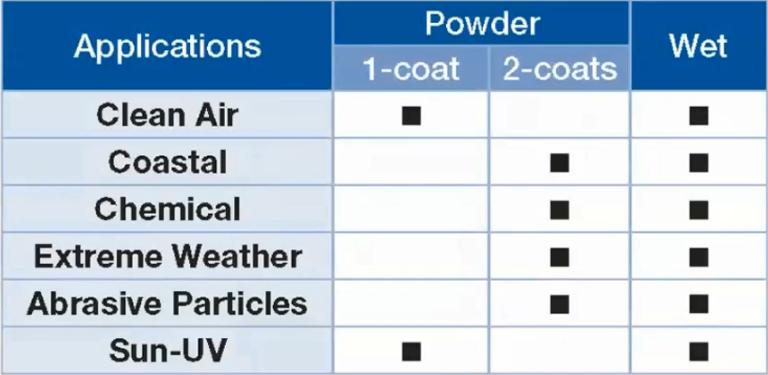We have learnt the differences in wet and powder coating applications in the HVAC industry. We can look side by side comparisons. There are a wide variety of colors available in both wet and powder coatings. Powder coatings require fewer passes to achieve specific thicknesses. Wet coating may require multiple coats to bring the dry film thickness to vendor’s specification. Curing time for powder coating is just 30 minutes compared to 10 to 14 days for wet coating. Powder coated surfaces are more flexible and are more resistant to chipping, fading, scratching and abrasion than wet coated surfaces. Two-coat powder processes are ideal for extreme applications, such as corrosive environments. Powder coatings are a better choice due to the time and cost considerations of wet coatings. The powder coating process is environmentally friendly because it does not contain any VOCs and many systems are capable of nearly 100% powder reclamation. Wet coating contains VOCs and the overspray waste cannot be reclaimed.
Selecting the right coating is a complex consideration that takes into consideration both the material selection and the environment. Engineers make coating selections based on many factors: including clean air (air quality), coastal (salt air), chemical resistance, extreme weather, abrasive particles and sun (UV protection).
This chart shows common powder and wet coatings and ideal applications in various environments. Clean air is a non-corrosive environment where a single powder coat would be sufficient. Coastal regions commonly need two-coat powder or multiple wet coats to protect from salt or moist air. It is recommended that fans in contact with chemicals be coated with two-coat powder or multiple wet coats. Extreme applications and abrasive particles require two-coat powder or multiple wet coats. Sun or UV protection is provided by one coat of powder multiple wet coats.
